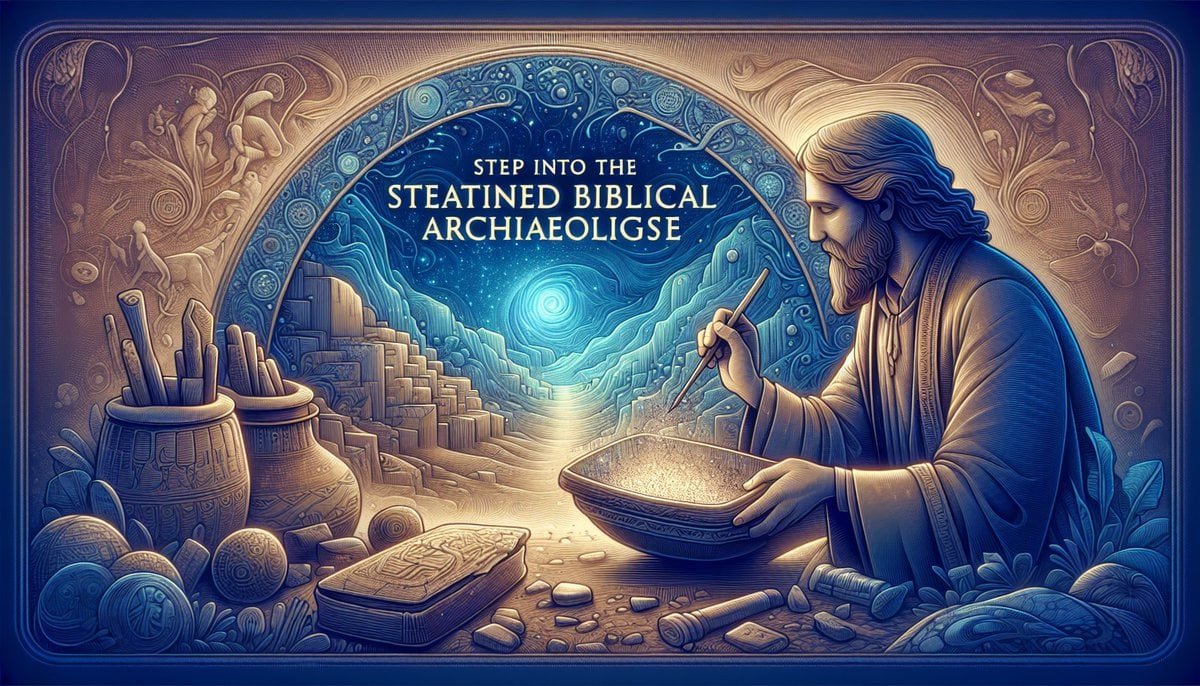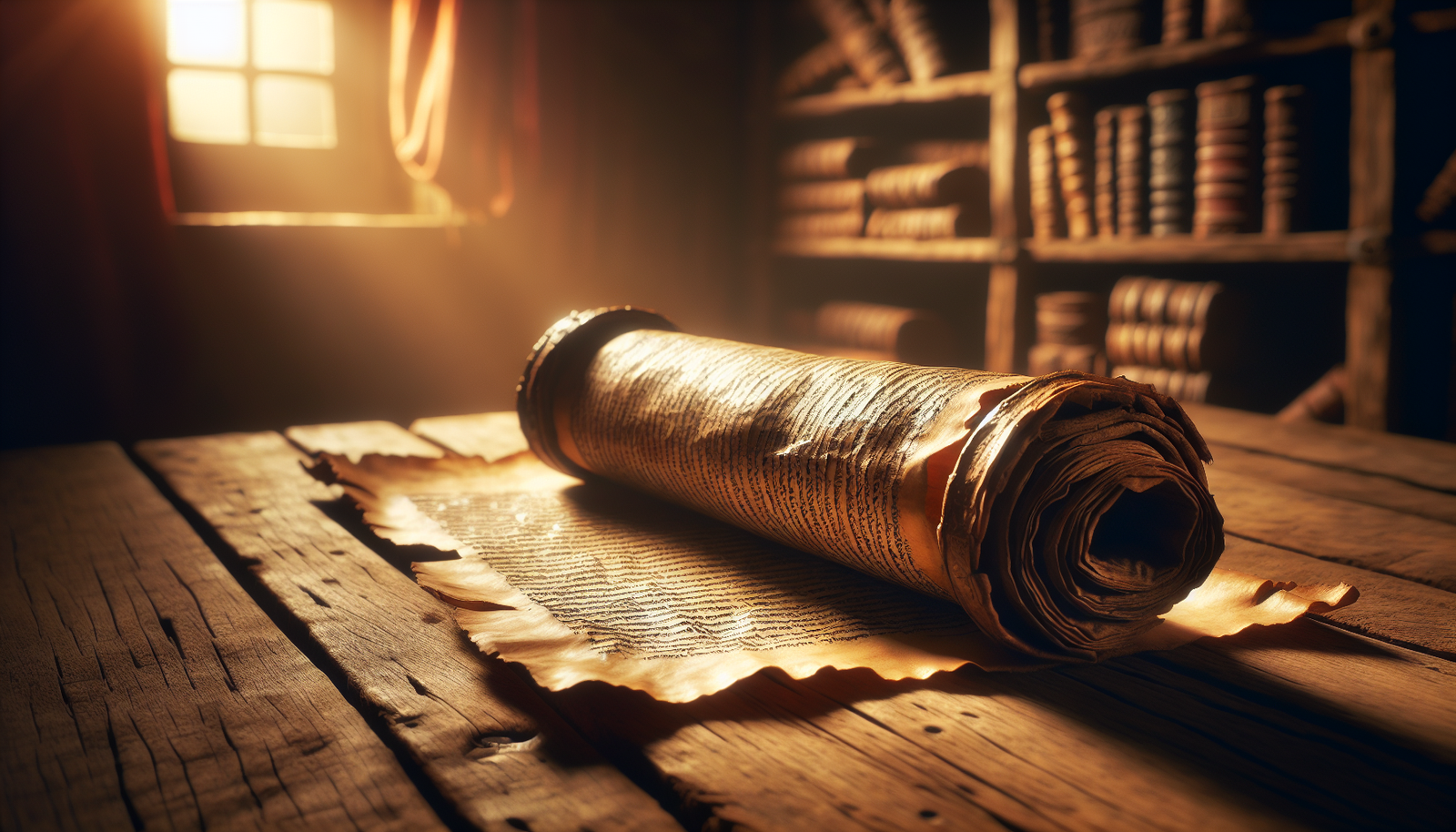Unveiling the enigmatic world of biblical archaeologist Arthur Cushman McGiffert III, this article explores the intriguing secrets that lie within his groundbreaking discoveries. Delving deep into his work, it uncovers the captivating complexities of McGiffert’s archaeological findings and sheds light on the invaluable contributions he has made to our understanding of biblical history. Through an exploration of his expeditions and excavations, readers will be transported to awe-inspiring sites and learn about the fascinating artifacts that have reshaped our knowledge of ancient civilizations. Journey into the captivating world of Arthur Cushman McGiffert III and embark on an unforgettable exploration of the past.

Early Life and Education
Family background
Arthur Cushman McGiffert III was born into a family with a rich history in the field of archaeology. His grandfather, Arthur Cushman McGiffert Sr., was a renowned archaeologist who specialized in the study of ancient civilizations. His father, Arthur Cushman McGiffert Jr., followed in his footsteps and made significant contributions to the field as well. Growing up, Arthur was surrounded by stories of archaeological expeditions and exciting discoveries, igniting his passion for exploration and uncovering the secrets of the past.
Formative years
From an early age, Arthur showed an innate curiosity and fascination with history. He spent countless hours reading books on ancient civilizations and exploring historical sites. His parents encouraged his interests, nurturing his thirst for knowledge and encouraging him to pursue a career in archaeology. In his formative years, Arthur developed a deep appreciation for the importance of preserving and interpreting the remnants of ancient cultures.
Academic journey
Arthur’s academic journey started at a prestigious university, where he pursued a degree in archaeology. His professors recognized his exceptional dedication and talent, and he quickly became a standout student. During his undergraduate years, Arthur participated in numerous field expeditions, honing his practical skills and gaining invaluable experience. His passion and dedication to the field caught the attention of his professors, who encouraged him to pursue a graduate degree to further specialize in biblical archaeology.
Career Beginnings
Influence of family legacy
Arthur’s career beginnings were heavily influenced by his family’s legacy in archaeology. Inspired by his grandfather and father, he felt a deep sense of responsibility to carry on their work and make his own mark in the field. Their guidance and mentorship provided him with the necessary tools and insights to embark on his own archaeological expeditions and build upon their achievements.
First archaeological expeditions
With the support of his family and the academic community, Arthur embarked on his first archaeological expeditions. These early experiences allowed him to refine his skills as a field archaeologist and exposed him to the practical challenges and triumphs of uncovering ancient artifacts. Working alongside seasoned professionals, Arthur learned the importance of meticulous excavation techniques, record-keeping, and collaboration with fellow archaeologists.
Significance of early findings
While Arthur’s early discoveries may not have garnered immediate widespread attention, they laid the foundation for his future groundbreaking excavations. These early findings provided crucial insights into the cultures and civilizations of biblical times, expanding our understanding of ancient societies and their relationships with the biblical narrative. They also showcased Arthur’s potential as a leading figure in the field, encouraging him to delve deeper into his research and continue pushing the boundaries of biblical archaeology.
Groundbreaking Excavations
Notable archaeological sites
Arthur’s groundbreaking excavations took him to numerous notable archaeological sites. From the deserts of the Middle East to the ruins of ancient cities, he dedicated himself to uncovering the secrets buried beneath the earth’s surface. Sites such as Qumran, Jericho, and Megiddo became playgrounds for Arthur’s inquisitive and meticulous exploration, each providing unique insights into the world of the Bible and its historical context.
Revolutionary techniques and methodologies
Arthur revolutionized the field of biblical archaeology through the introduction of innovative techniques and methodologies. He embraced technological advancements and incorporated cutting-edge tools and methods into his excavations. By combining traditional archaeological practices with modern technologies such as ground-penetrating radar and multi-spectral imaging, Arthur was able to reveal hidden details and reconstruct the past with unprecedented accuracy.
Key discoveries and their implications
Throughout his career, Arthur made several key discoveries that had profound implications for biblical scholarship. From uncovering ancient manuscripts and inscriptions to shedding light on significant historical events mentioned in the Bible, Arthur’s findings challenged prevailing beliefs and offered fresh perspectives on the ancient world. These discoveries forced scholars to reassess their interpretations of biblical texts and deepened our understanding of the historical and cultural contexts in which they were penned.
Controversial Interpretations
Challenging prevailing beliefs
Arthur’s groundbreaking discoveries often challenged prevailing beliefs and interpretations held by scholars for centuries. His meticulous research and evidence-based approach forced scholars to confront long-held assumptions and reevaluate their understanding of biblical history. By presenting alternative interpretations supported by empirical evidence, Arthur ignited spirited debates within the scholarly community and paved the way for new ways of thinking about biblical narratives.
Debate among scholars
Arthur’s controversial interpretations sparked heated debates among scholars with differing perspectives. These academic discussions and engagements fueled the advancement of biblical scholarship, challenging researchers to critically analyze and scrutinize existing theories. Through his thought-provoking findings and willingness to engage in constructive dialogue, Arthur encouraged a healthy exchange of ideas and pushed the boundaries of biblical interpretation.
Impact on traditional biblical interpretations
Arthur’s controversial interpretations had a profound impact on traditional biblical interpretations. His research and discoveries shed light on previously overlooked details, forcing scholars to reevaluate long-established beliefs. While causing initial resistance and skepticism, Arthur’s evidence-based approach gradually influenced the field, leading to a more nuanced and comprehensive understanding of biblical texts. His work opened doors to new possibilities and encouraged scholars to approach the study of the Bible with fresh curiosity and an openness to reinterpretation.
Contributions to Biblical Scholarship
New insights into ancient texts
Arthur’s contributions to biblical scholarship brought forth new insights into ancient texts. His meticulous analysis of biblical manuscripts, coupled with his interdisciplinary approach, revealed hidden nuances and linguistic intricacies. By examining contexts, language, and historical backgrounds, Arthur deepened our understanding of biblical texts, enriching the world’s knowledge of religious traditions and cultural practices of bygone eras.
Reevaluation of historical events
Through his archaeological excavations and interdisciplinary research, Arthur prompted a reevaluation of historical events mentioned in biblical accounts. His discoveries allowed for a more accurate and detailed reconstruction of significant events, challenging preconceived notions and inspiring new narratives. This reevaluation not only expanded our historical knowledge but also prompted scholars to consider the complex interplay between religion, politics, and social dynamics in ancient societies.
Connections between archaeology and biblical narratives
One of Arthur’s most significant contributions lay in bridging the gap between archaeology and biblical narratives. By contextualizing archaeological findings within the narratives preserved in biblical texts, he provided a framework for understanding the material remains left by ancient communities. His work emphasized the symbiotic relationship between archaeology and biblical studies, highlighting the interplay between scripture and the tangible artifacts that bring history to life.
Prominent Publications
Books on archaeological findings
Arthur’s passion for sharing his discoveries and insights led him to publish several influential books on his archaeological findings. These publications served as comprehensive accounts of his excavations and research, providing a valuable resource for scholars and enthusiasts alike. With each book, Arthur presented a wealth of evidence and analytical interpretations, inviting readers into the world of biblical archaeology and expanding their understanding of the interconnectedness between history, religion, and culture.
Academic articles in prestigious journals
In addition to his books, Arthur published numerous academic articles in prestigious journals. These articles showcased his rigorous research methodology, while presenting his findings and interpretations to a scholarly audience. His work contributed to ongoing conversations within the field of biblical archaeology, stimulating further research and encouraging other scholars to build upon his groundwork.
Collaborative projects with fellow experts
Arthur was known for his collaborative spirit and frequently engaged in joint projects with fellow experts. By forming partnerships, he fostered an environment of interdisciplinary collaboration that allowed for a broader exploration of archaeological sites and research questions. Through these collaborative efforts, Arthur encouraged the exchange of ideas and the pooling of resources, ultimately advancing the field of biblical archaeology and paving the way for a richer understanding of the ancient world.
Academic Legacy
Mentoring future archaeologists
Arthur’s passion for mentorship led him to dedicate a significant portion of his career to mentoring and guiding aspiring archaeologists. Recognized for his knowledge and expertise, he took on numerous students and provided them with invaluable opportunities for hands-on field experience and scholarly discourse. Arthur’s mentorship instilled in his protégés the importance of approaching archaeological research with integrity, curiosity, and a deep appreciation for the past.
Establishing research institutions
Committed to fostering further advancements in biblical archaeology, Arthur played an instrumental role in establishing research institutions dedicated to the field. By creating these institutes, he provided scholars and students with a platform for collaborative research, supported by state-of-the-art facilities and resources. These institutions continue to shape the future of biblical archaeology, carrying on Arthur’s legacy of rigorous research and discovery.
Influencing the next generation of scholars
Throughout his career, Arthur’s passion for biblical archaeology and his commitment to excellence served as an inspiration to the next generation of scholars. His dedication to expanding knowledge and challenging long-held beliefs instilled in his students a sense of curiosity, critical thinking, and the pursuit of truth. Many of his former students have gone on to become influential figures in the field, carrying forward Arthur’s commitment to pushing the boundaries of biblical archaeology.
Recognition and Awards
Recipient of prestigious honors
Arthur’s groundbreaking work and influential contributions to the field garnered him numerous prestigious honors and accolades. He was awarded the prestigious Barker Medal for his significant contributions to biblical archaeology and was also honored with the esteemed Archaeological Achievement Award for his pioneering methodologies and discoveries. These awards served as testament to Arthur’s impact and the profound influence he had within the field.
Impact and recognition in the field
Arthur’s impact on the field of biblical archaeology was widely recognized and celebrated within the academic community. His research and interpretations sparked meaningful discussions, opened new avenues for exploration, and contributed to the overall advancement of biblical scholarship. Moreover, his unique interdisciplinary approach and dedication to accuracy and integrity set a high standard that continues to inspire and guide researchers in the field.
Reception of controversial ideas
While some of Arthur’s ideas were controversial and challenged established beliefs, they were also met with fascination and intrigue. The scholarly community, though initially hesitant, gradually embraced his evidence-based approach and recognized the merit of his findings. The reception of his controversial ideas served as a testament to Arthur’s rigorous research methodology and his commitment to pushing the boundaries of knowledge in the pursuit of truth.
Personal Life and Hobbies
Family life and relationships
Arthur’s personal life was intertwined with his professional pursuits. He cherished his family and valued the support and encouragement they provided throughout his career. His spouse and children were his pillars of strength, offering unwavering support and understanding in the face of the demanding nature of his work. Their shared passion for archaeology fostered a deep bond rooted in intellectual curiosity and a love for uncovering the secrets of the past.
Outside interests and hobbies
Beyond his archaeological endeavors, Arthur had a wide range of interests and hobbies that allowed him to find balance in his life. He was an avid reader and could often be found engrossed in historical novels and philosophical treatises. Arthur also had a deep appreciation for nature and enjoyed spending time outdoors, exploring hiking trails and immersing himself in the beauty of the natural world. Photography was another passion of his, and he delighted in capturing moments of archaeological significance and natural beauty through his lens.
Balance of personal and professional life
Striking a balance between his personal and professional life was of utmost importance to Arthur. While he dedicated the majority of his time and energy to his research and excavations, he always made sure to prioritize quality time with his family. Whether it was engaging in stimulating conversations around the dinner table or embarking on family vacations to historical sites, Arthur recognized the significance of nurturing personal relationships and cherishing moments away from the demands of his work.
Continuing Investigations
Ongoing excavations
Even after a career filled with groundbreaking discoveries, Arthur’s thirst for knowledge and exploration remained insatiable. He continued to lead ongoing excavations at significant archaeological sites, aiming to unearth new insights and uncover the hidden stories of civilizations past. These ongoing excavations allowed him to maintain an active presence in the field and contribute to the evolving landscape of biblical archaeology.
Current research projects
In addition to his excavations, Arthur also dedicated time to pursue current research projects. Using both traditional and cutting-edge research methodologies, he delved deeper into areas of biblical archaeology that had yet to be fully explored. By focusing on unanswered questions and unexplored avenues, Arthur aimed to continually expand the boundaries of knowledge and shed new light on the interconnectedness of ancient societies and religious narratives.
Future contributions to the field
Arthur’s unwavering dedication to the field of biblical archaeology ensured that his contributions would extend far into the future. Recognizing the value of passing on knowledge and sparking curiosity in new generations of scholars, he aimed to establish an enduring legacy that would continue to shape the field. Through his ongoing excavations, research projects, and mentorship of future archaeologists, Arthur planned to leave an indelible mark on biblical archaeology and inspire others to carry on his work long after he had retired.






